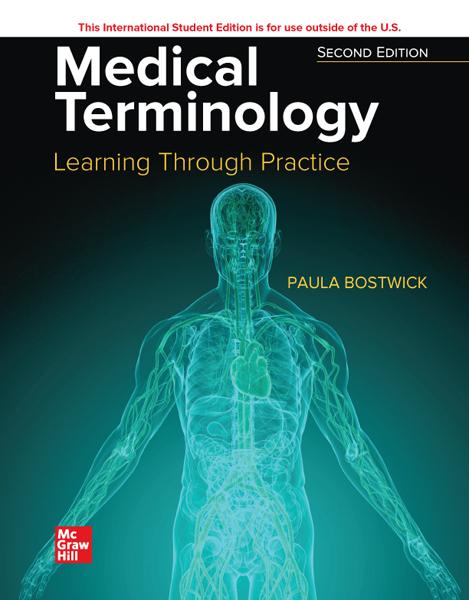Advanced Techniques in Canine and Feline Neurosurgery
Edited by Andy Shores
Clinical Professor and Chief, Neurosurgery and Neurology
Mississippi State University College of Veterinary Medicine
The Veterinary Specialty Center
Mississippi State, Starkville, MS, USA
Brigitte A. Brisson
Professor of Small Animal Surgery
Department of Clinical Studies
Ontario Veterinary College University of Guelph Guelph, Ontario, Canada
This edition first published 2023 © 2023 John Wiley & Sons, Inc.
All rights reserved. No part of this publication may be reproduced, stored in a retrieval system, or transmitted, in any form or by any means, electronic, mechanical, photocopying, recording or otherwise, except as permitted by law. Advice on how to obtain permission to reuse material from this title is available at http://www.wiley.com/go/permissions.
The right of Andy Shores and Brigitte A. Brisson to be identified as the authors of the editorial material in this work has been asserted in accordance with law.
Registered Office
John Wiley & Sons, Inc., 111 River Street, Hoboken, NJ 07030, USA
For details of our global editorial offices, customer services, and more information about Wiley products visit us at www.wiley.com.
Wiley also publishes its books in a variety of electronic formats and by print‐on‐demand. Some content that appears in standard print versions of this book may not be available in other formats.
Trademarks: Wiley and the Wiley logo are trademarks or registered trademarks of John Wiley & Sons, Inc. and/or its affiliates in the United States and other countries and may not be used without written permission. All other trademarks are the property of their respective owners. John Wiley & Sons, Inc. is not associated with any product or vendor mentioned in this book.
Limit of Liability/Disclaimer of Warranty
The contents of this work are intended to further general scientific research, understanding, and discussion only and are not intended and should not be relied upon as recommending or promoting scientific method, diagnosis, or treatment by physicians for any particular patient. In view of ongoing research, equipment modifications, changes in governmental regulations, and the constant flow of information relating to the use of medicines, equipment, and devices, the reader is urged to review and evaluate the information provided in the package insert or instructions for each medicine, equipment, or device for, among other things, any changes in the instructions or indication of usage and for added warnings and precautions. While the publisher and authors have used their best efforts in preparing this work, they make no representations or warranties with respect to the accuracy or completeness of the contents of this work and specifically disclaim all warranties, including without limitation any implied warranties of merchantability or fitness for a particular purpose. No warranty may be created or extended by sales representatives, written sales materials or promotional statements for this work. The fact that an organization, website, or product is referred to in this work as a citation and/or potential source of further information does not mean that the publisher and authors endorse the information or services the organization, website, or product may provide or recommendations it may make. This work is sold with the understanding that the publisher is not engaged in rendering professional services. The advice and strategies contained herein may not be suitable for your situation. You should consult with a specialist where appropriate. Further, readers should be aware that websites listed in this work may have changed or disappeared between when this work was written and when it is read. Neither the publisher nor authors shall be liable for any loss of profit or any other commercial damages, including but not limited to special, incidental, consequential, or other damages.
Library of Congress Cataloging‐in‐Publication Data applied for:
ISBN 9781119790426 (hardback)
Cover Design: Wiley
Cover Images: Courtesy of Andy Shores
Set in 9.5/12.5pt STIXTwoText by Straive, Chennai, India.
Contents
List of Contributors xvii
ACVS Foreword xix
ACVIM Foreword xxi
Preface xxiii
About the Companion Website xxv
1 A History of Veterinary Neurosurgery: 1900–2000 1
Don Sorjonen
Introduction 1
Advances in Imaging Techniques 1
Advances in Spinal Procedures 2
Thoracolumbar (T1–S1) 2
Cervical (C1–C7) 5
Advances in Intracranial Procedures 8
Epilogue 11
References 12
2 Applications of 3D Printing in Veterinary Neurosurgery 17
Fred Wininger
Steps of the 3D Printing Process 18
Acquisition 18
Thresholding 18
Segmentation 18
File Format Creation 19
Manifold Manipulation 19
Anatomic Modeling 19
Printing 20
Current Spinal Applications 20
Customized Tools 20
Current Brain Applications 21
Future Applications of 3D Printing in Veterinary Neurosurgery 23
References 23
3 Postoperative Radiation Therapy of Intracranial Tumors 25
M. W. Nolan
Introduction 25
Overview of Radiation Therapy 25
Radiobiology 25
DNA as The Target for Radiation 25
Normal Tissue Injury 26
Rationale for Radiation Fractionation 26
Radiation Physics and Treatment Planning 28
Beam Energy Selection 28
Dose Calculations 28
Target Localization Strategies 29
Delivery Systems 31
Plan Evaluation 32
Specific Tumor Types 33
Meningioma 33
Clinical Data 33
Radiotherapeutic Techniques 34
Glial Tumors 34
Clinical Data 34
Radiotherapeutic Techniques 35
Choroid Plexus Tumors 35
Clinical Data 35
Radiotherapeutic Techniques 35
Spinal Tumors 35
Clinical Data 35
Radiotherapeutic Techniques 36
Stereotactic Radiosurgery and Stereotactic Radiation Therapy 36
References 37
4 Practice and Principles of Neuroanesthesia for Imaging and Neurosurgery 39
Claudio C. Natalini
Introduction 39
Increases in ICP 39
Clinical Signs 39
Dynamics 39
Cerebral Perfusion and Anesthesia 40
The Cushing Reflex and Anesthesia 40
Increases in ICP During Anesthesia 41
ICP and Contrast Myelography 42
Hydrocephalus 42
Neurologic Monitoring: Monitoring Brain State During Anesthesia 42
Modalities of Neurologic Monitoring 42
Electroencephalogram EEG 42
Sensory-Evoked Responses (SERs) and Somatosensory-Evoked Potentials (SSEPs) 42
Glycemic Control 42
Monitoring Nociception 42
Other Modalities 43
Sedation versus General Anesthesia for Imaging 43
Regional Anesthesia for Laminectomy, Hemilaminectomy, and Vertebral Fractures 43
Anesthesia Protocol for Intracranial Surgery 43
References 44
8 Percutaneous Laser Disk Ablation 78
Danielle Dugat
Introduction 78
Laser Ablation 78
Candidate Selection 79
Procedure Description 80
Procedure Complications and Recurrence 82
Diagnostic Evaluation of PLDA 83
Conclusion 84
References 84
9 The Cranial Thoracic Spine: Approach via Dorsolateral Hemilaminectomy 86
Yael Merbl and Annie Vivian Chen-Allen Indications 86
Surgical Anatomy 87
Patient Positioning 87
Surgical Technique 88
Postoperative Care 89
References 90
10 Principles in Surgical Management of Locked Cervical Facets in Dogs 91
Andy Shores and Ryan Gibson
Introduction 91
Unilateral Locked Cervical Facets in Humans 91
Clinical Presentation 91
Surgical Techniques 92
Postoperative Care 94
Summary/Conclusions 94
References 95
11 Spinal Stabilization: Cervical Vertebral Column 96
Bianca F. Hettlich
Introduction 96
Preoperative Planning 96
Anatomical Considerations 96
Implant Selection 97
Positioning and Approach 97
Vertebral Distraction 98
Diskectomy 99
Intervertebral Spacer 99
Indication for Additional Decompression 101
Surgical Stabilization 101
Monocortical Screw/PMMA Fixation 101
Vertebral Body Plates 102
Other Techniques 104
Stabilization of Multiple Spaces 105
Postoperative Assessment 105
Complications 106
References 107
12 Stabilization of the Thoracolumbar Spine 109
Simon T. Kornberg and Brigitte A. Brisson
Preoperative Planning 109
Decompression with Stabilization 111
Technique 111
Implant Selection 111
Thoracolumbar Spine 114
Positioning and Approach 114
Implant Selection 114
Spinal Stapling/Segmental Fixation 116
Lumbosacral Spine 118
Anatomy 118
Positioning and Approach 118
Reduction 119
Implant Selection 119
Postoperative Imaging 120
Complications 120
Aftercare 122
Acknowledgments 122
References 122
13 Surgical Management of Congenital Spinal Anomalies 124
Sheila Carrera-Justiz and Gabriel Garcia
Diagnostics 124
Treatment 125
Prognosis 126
Future Directions 127
Summary 127
References 127
14 Lumbosacral Decompression and Foraminotomy Techniques 129
Stef H. Y. Lim and Michaela Beasley
Pathophysiology and Anatomy 129
L7–S1 Foramina Anatomy 129
Diagnosis 130
History and Clinical Signs 130
Physical Examination Findings 130
Orthopedic Examination Findings 130
Neurologic Examination Findings 131
Radiography 131
Myelography (Contrast Study) 132
Computed Tomography (CT) 132
Magnetic Resonance Imaging (MRI) 133
Force Plate Analysis 134
Electrodiagnostics 134
Treatment: Conservative and Medical Therapy 134
Surgery 134
Dorsal Laminectomy 135
Patient Preparation and Positioning 135
Surgical Technique 135
Foraminotomy 136
Facetectomy 137
Distraction, Fusion, and Stabilization 137
Pins and PMMA 137
SOP Plating 137
Surgical Technique 138
Pedicle Screw and Rod Fixation (PSRF) 138
Minimally-Invasive Transilial Vertebral (MTV) Blocking 138
Postoperative Management 139
References 139
15 Surgical Management of Spinal Nerve Root Tumors 143
Ane Uriarte
Introduction 143
Clinical Presentations 143
Meningioma 143
Peripheral Nerve Sheath Tumors 143
Diagnosis 144
Imaging 144
Spinal Meningioma MRI 144
PNST MRI 144
Electrodiagnostics 147
Cytology/Histology 147
Meningiomas 147
PNST 147
Surgery of PNST Within the Spinal Nerves 148
Cervical Approach 148
Positioning 148
Lateral Surgical Approach to Caudal Cervical Foramen After Amputation 148
Dorsal Surgical Approach for Cervical Hemilaminectomy 149
Respiratory Compromise in Cervical Myelopathies 149
Lumbar Approach 150
Approach to the L7–S1 Foramen 150
Postoperative Care 150
Prognosis 151
Radiation Therapy 151
References 151
16 Surgical Management of Craniocervical Junction Anomalies 153
Sofia Cerda-Gonzalez Indications 153
Surgical Anatomy 154
Patient Preparation and Positioning 155
Surgical Technique 156
Outcomes 159
References 159
17 Ventral Approach to the Cervicothoracic Spine 161
Isidro Mateo
Introduction 161
Surgical Anatomy [10–12] 161
Muscles 161
Endocrine Testing 193
Brain Imaging 193
Imaging of Pituitary Masses 194
Imaging of Non-Pituitary Sellar Masses 195
Surgery 196
Anatomy 196
Localization 196
Positioning 197
Approach 197
Surgical Outcome 198
In Hospital Care 200
Postoperative Management and Monitoring 200
Postoperative Complications 200
Endocrine and Metabolic Complications 200
Respiratory Complications 203
Neurologic Complications 204
Procedural Related Complications 204
Long term Follow Up 205
References 206
21 Surgical Management and Intraoperative Strategies for Tumors of the Skull 211
Jonathan F. McAnulty
Osteosarcoma and Multilobular Osteochrondrosarcoma of the Cranium 211
Diagnosis and Characterization 212
Surgical Planning and Treatment 212
Exposure 212
Challenges in Skull Tumor Resection 214
Parietal Calvarial and Dorsal Frontal Bone Lesions 214
Frontal Bone within the Orbit and Sphenoid Bone Lesions 215
Occipital Bone Lesions 215
MRI Assessment of Blood Flow to the Transverse Sinuses 216
Slow Occlusion of Flow from the DSS to the Transverse Sinus Using a Balloon Catheter 217
Extension of Tumor to the tentorium Cerebelli 218
Zygomatic Arch and Ramus of the Mandible 218
Complications and Risks 219
Cranioplasty 220
References 221
22 Surgical Management of Intracranial Meningiomas 223
R. Timothy Bentley
Introduction 223
Anatomy 223
Transfrontal Craniotomy (Bilateral Transfrontal Craniotomy) 225
Technique 225
Closure 227
Modifications 228
The Falx Cerebri and the Dorsal Sagittal Sinus (DSS) 229
Rostrotentorial Craniectomy/Craniotomy (Lateral Craniectomy/Craniotomy) 231
Technique 232
Closure: Craniectomy vs Craniotomy 233
Combined Rostrotentorial–Transfrontal Approach 234
Suboccipital Craniectomy (See Also Chapter 24 Surgery of Caudal Fossa Tumors) 235
Technique 235
Closure 236
Meningioma Resection and Instrumentation 236
Simpson Classification of Meningioma Resection in Humans (Table 22.2) 237
Substitutes for Resected Dura Mater 237
Complications and Mitigation Strategies 239
References 239
23 Lateral Ventricular Fenestration 241
Andy Shores
Introduction 241
Rationale 241
Technique 242
Potential Complications 243
Discussion 243
References 248
24 Surgery of the Caudal Fossa 249
Beverly K. Sturges
Anatomy 249
Indications for Surgery 250
Preoperative Assessment and Anesthetic Management 251
Surgical Positioning 251
Surgical Approach(es) to the Caudal Fossa 252
Midline Occipital Approach [3–5] 252
Extended Lateral Approach with Occlusion of The Transverse Sinus [3, 6] 255
Lateral Approach to The Cerebellum in Cats [8] 258
Closing and Reconstruction 258
Postoperative Care 259
Complications 260
References 261
25 Transzygomatic Approach to Ventrolateral Craniotomy/Craniectomy 262
Martin Young and Sandy Chen
Introduction 262
Patient Positioning/Preparation 262
Surgical Procedure 263
References 266
Index 269
M. W. Nolan, ACVR North Carolina State University Raleigh, North Carolina, USA
Tina Owen, ACVS Washington State University Pullman, Washington, USA
John Rossmeisl, ACVIM Virginia Tech, Blacksburg Virginia, USA
Andy Shores, ACVIM Mississippi State University Mississippi State, Mississippi, USA
Don Sorjonen, ACVIM Auburn University College of Veterinary Medicine Auburn, Alabama, USA
Beverly K. Sturges, ACVIM University of California Davis, California, USA
Chris Tollefson, ACVR Cornell University Ithaca, New York, USA
Fred Wininger, ACVIM CARE Charlotte Animal Referral and Emergency Charlotte, North Carolina, USA
Ane Uriarte, ECVN, EBVS European Specialist in Veterinary Neurology Head of Neurology at Southfields Veterinary Specialist, UK
Martin Young, ACVIM Bush Veterinary Neurology Service Richmond, Virgina, USA
The American College of Veterinary Surgeons Foundation is pleased to present Advanced Techniques in Canine and Feline Neurosurgery in the book series entitled Advances in Veterinary Surgery
The ACVS Foundation is an independently charted philanthropic organization that supports the advancement of surgical care of all animals through funding of educational and research opportunities for veterinary surgical residents and board‐certified veterinary surgeons.
Our collaboration with Wiley Publishing Company brings unique contributions that can benefit and enhance the learning process to all interested in veterinary surgery.
One of the key missions of the ACVS Foundation is to promote innovative education for residents in training and diplomates. This book underscores our intent, focusing on achievements made by scientists, their latest key findings, along with new techniques made possible by state‐of‐the‐art equipment. This book will inspire, inform, and provide
direction for residents in training as well as surgeons already employing neurosurgical procedures in their practices.
Advanced Techniques in Canine and Feline Neurosurgery is edited by Drs. Andy Shores and Brigitte Brisson. I’d like to congratulate and thank them for helping to move this fast‐growing field forward. They have chosen an international group of strong contributing authors to cover canine and feline neurosurgical skills, equipment, techniques, and procedures. I am sure you will find this reference extremely valuable.
The ACVS Foundation is proud to collaborate with Wiley in this important series and is honored to present this newest book in the Advances in Veterinary Surgery series.
R. Reid Hanson, DVM, ACVS, ACVECC Chair, Board of Trustees
ACVS Foundation ACVS Foreword
Preface
The interest of many and the many advancements in the field of veterinary neurosurgery prompted the development of this book. And while some routine or standard approaches are included in these chapters, much of the content is devoted to advanced techniques being performed by many of the top veterinary neurosurgeons in the world. Some are ACVS trained, some are ACVIM (Neurology) or ECVN trained, but we share the same vocation: veterinary neurosurgery. Veterinary neurosurgery continues to grow and certainly has reached a point of being a very important subspecialty in our profession. The hours of training and devotion to this discipline by my fellow neurosurgeons is noteworthy and certainly deserving of formal recognition for what it has become – its own entity. And while I do not expect a major change in my lifetime, I sincerely hope this work will foster the continued development of our subspecialty by the many fine individuals currently engaged and for those to come. As such, I believe formal recognition
should and will come with time: the ABVS should give strong consideration to the development of a separate specialty or a sub‐pecialty.
This book contains many spinal and intracranial procedures, several of those (such as the surgical management of sellar masses) are on the cutting edge of our discipline. I am very grateful for the many hours my colleagues have put into these works and they are well deserving of my heartfelt thanks. In the midst of a pandemic, these colleagues came through with outstanding works.
I trust the readers will benefit from the content and especially from the number of accompanying videos on the website.
I sincerely appreciate the tremendous effort put forth by my colleagues that contributed to this volume.
Andy Shores Mississippi State, MS, USA 2023









